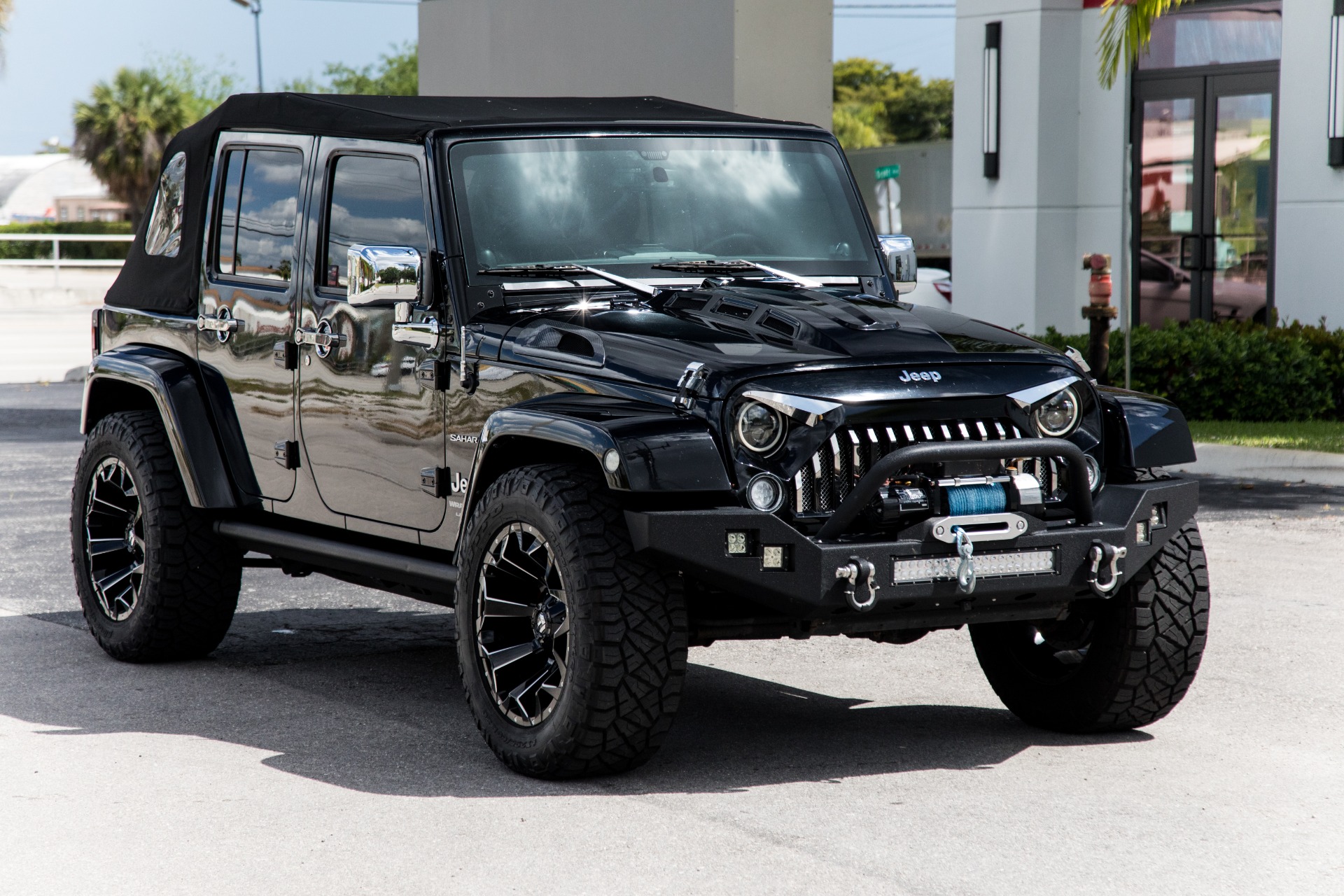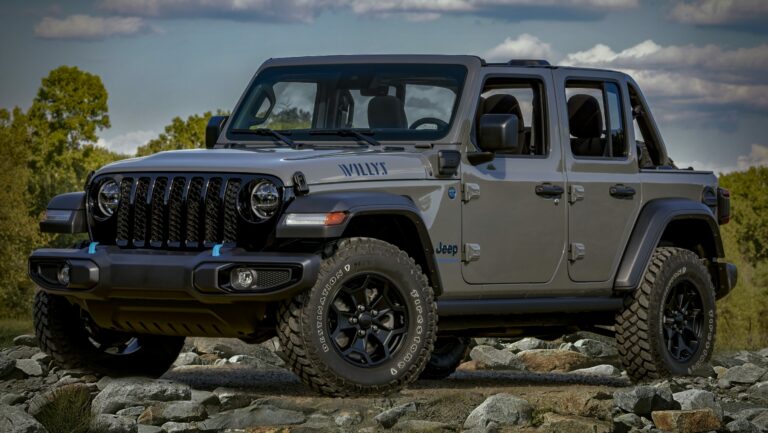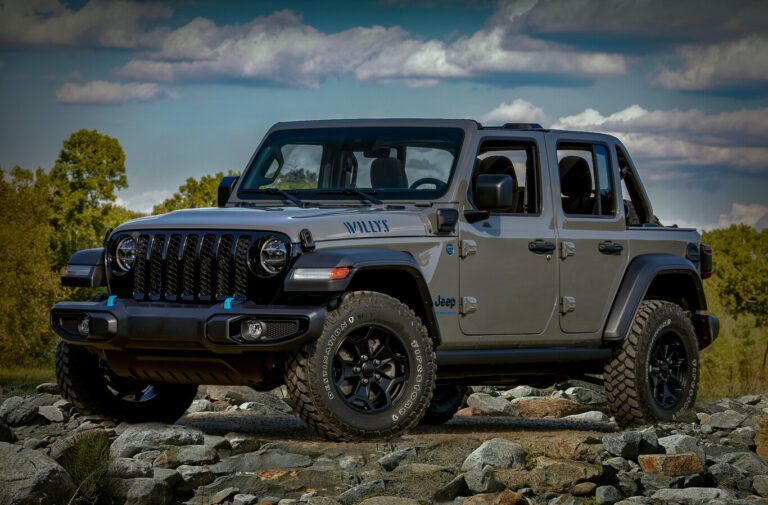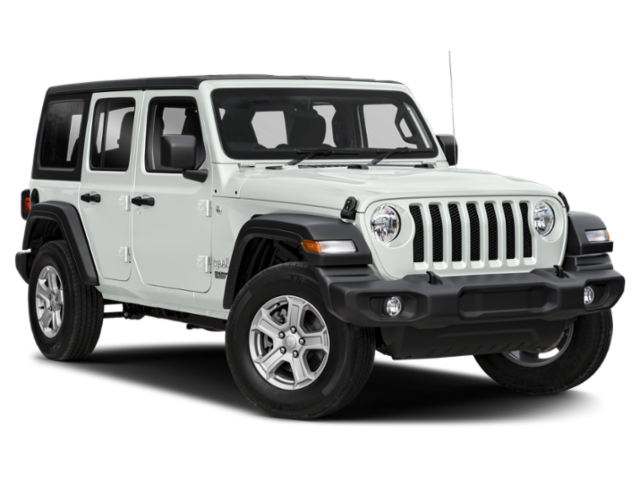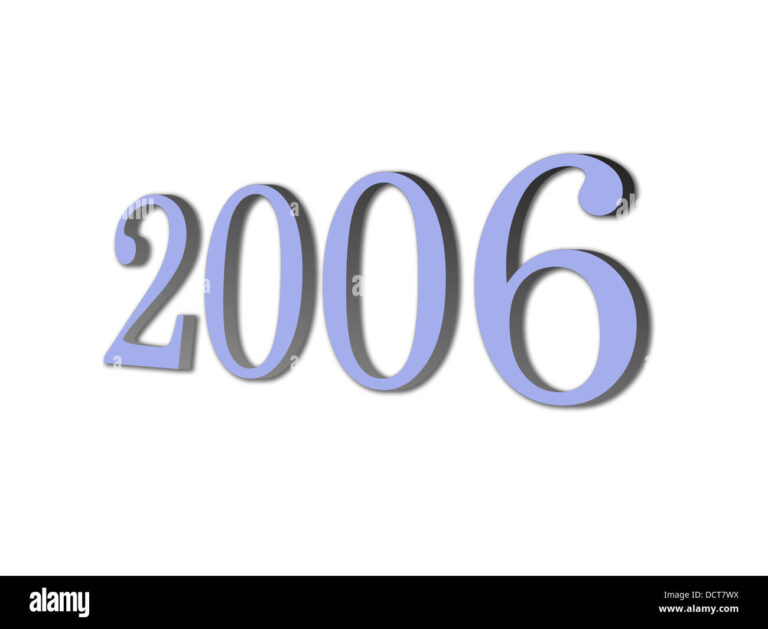Wrangler Jeep Design: An Enduring Icon of Form, Function, and Freedom
Wrangler Jeep Design: An Enduring Icon of Form, Function, and Freedom jeeps.truckstrend.com
Introduction: The Enduring Spirit of Wrangler Design
The Jeep Wrangler is more than just a vehicle; it’s a cultural phenomenon, a symbol of adventure, and a testament to enduring design principles. At its core, "Wrangler Jeep Design" encapsulates a unique philosophy that marries utilitarian ruggedness with an unmistakable, iconic aesthetic. Unlike many vehicles that undergo radical transformations with each generation, the Wrangler’s design has consistently honored its heritage, evolving subtly while retaining the core elements that make it instantly recognizable. This isn’t merely about styling; it’s about a design ethos rooted in unparalleled off-road capability, modularity, and a direct lineage to the original Willys MB of World War II. Understanding Wrangler Jeep Design is to understand a masterclass in functional aesthetics, where every line, every component, serves a purpose, contributing to its legendary performance and its unyielding appeal to generations of adventurers. This article will delve into the multifaceted aspects of Wrangler design, exploring its origins, evolution, core principles, and the innovations that keep it relevant without sacrificing its soul.
Wrangler Jeep Design: An Enduring Icon of Form, Function, and Freedom
The Enduring Legacy: Roots and Core Elements of Wrangler Design
The story of Wrangler Jeep design begins not with the "Wrangler" nameplate itself, but with its direct ancestor, the Willys MB. Commissioned for military service during WWII, the MB was a marvel of functional design: compact, lightweight, and incredibly capable. Its design was purely dictated by necessity – a flat hood for map reading, exposed fenders for easy repair, a seven-slot grille for radiator cooling, and round headlights for simplicity.
When the civilian CJ (Civilian Jeep) series emerged post-war, it inherited these foundational design cues. The CJ models, from the CJ-2A to the CJ-8, cemented the visual language that would become synonymous with Jeep:
- The Seven-Slot Grille: A distinctive and functional element allowing airflow to the engine, originally designed around the spacing of the Willys MB’s headlamps.
- Round Headlights: Simple, robust, and effective, they became an immediate identifier.
- Flat, Exposed Fenders: Minimalistic, easy to repair or replace, and allowing for maximum wheel articulation.
- Exposed Hood Latches and Door Hinges: A visual nod to its utilitarian origins, emphasizing ruggedness and ease of modification.
- Fold-Down Windshield: A direct carryover from military specifications, offering an open-air experience and improved visibility in challenging terrain.
- Removable Doors and Tops: The ultimate expression of freedom and adaptability, allowing drivers to tailor the vehicle to their environment.
![]()
These elements are not mere styling choices; they are functional design decisions that have been refined and integrated into every iteration of the Wrangler, ensuring its DNA remains pure even as it adapts to modern demands. This unwavering commitment to its heritage is a cornerstone of Wrangler Jeep Design.
Evolution of an Icon: Generations of Wrangler Design (YJ, TJ, JK, JL)
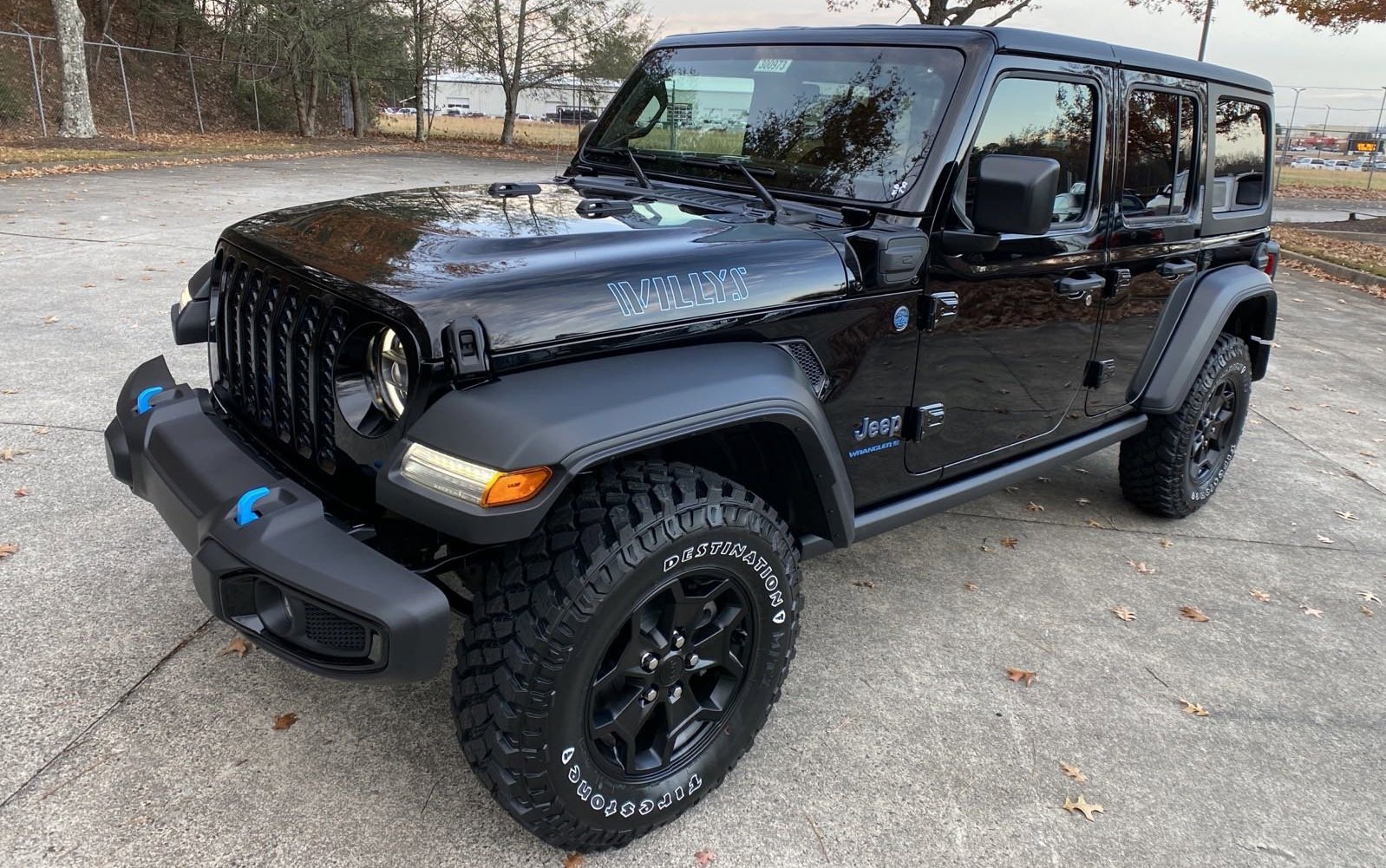
While the core identity remains, the Wrangler has undergone significant design evolution across its generations, each reflecting the technological advancements and market demands of its era while carefully balancing tradition with innovation.
YJ (1987-1995): The Departure and Return
The first vehicle to officially bear the "Wrangler" name, the YJ, was a controversial design departure due to its rectangular headlights. This choice aimed to distinguish it from the outgoing CJ series and appeal to a broader market seeking more modern aesthetics. Despite the headlight change, the YJ retained the classic seven-slot grille, exposed hinges, and removable top/doors. It introduced a wider stance for better stability and a more comfortable interior, laying the groundwork for a more refined civilian vehicle while still being incredibly capable off-road.
TJ (1997-2006): A Resurgence of Classicism
The TJ generation saw a triumphant return to round headlights, a move widely celebrated by purists and enthusiasts. Beyond aesthetics, the TJ introduced a significant functional design upgrade: a Quadra-Coil suspension system derived from the Grand Cherokee. This replaced the YJ’s leaf springs, offering vastly improved ride comfort and off-road articulation, directly influencing the vehicle’s stance and capability. The interior also became more ergonomic, yet maintained a rugged, easy-to-clean character. The introduction of the Rubicon trim (2003) also brought specific design elements like larger tires and rock rails, reinforcing its extreme off-road intent.

JK (2007-2017): The Modern Era and Four Doors
The JK represented the most significant design overhaul in the Wrangler’s history, primarily with the introduction of the four-door Unlimited model. This decision dramatically expanded the Wrangler’s market appeal, making it a viable family vehicle while retaining its off-road prowess. The JK was larger, wider, and offered more interior space and modern conveniences. While its design cues remained undeniably Wrangler (seven-slot grille, round headlights, exposed hinges), the overall form became more muscular and contemporary, reflecting a more global appeal. The increased size presented a design challenge: how to scale up an icon without losing its agility and essence. Jeep succeeded by maintaining the classic proportions and modularity.
JL (2018-Present): Refinement and Intelligent Integration
The current JL generation masterfully blends classic design with cutting-edge technology and subtle aerodynamic improvements. Visually, it’s very similar to the JK, but with refined details:
- LED Lighting: Modern, efficient lighting integrated seamlessly into the classic round headlight design.
- More Raked Grille: A slightly more aerodynamic angle for improved fuel efficiency.
- Functional Vents: Located behind the front fenders, these reduce hood flutter.
- Lighter Materials: Aluminum doors, hinges, hood, and tailgate significantly reduce weight, improving performance and efficiency, a key design consideration for modern vehicles.
- Sky One-Touch Power Top: An innovative design offering open-air freedom at the touch of a button, blending convenience with the traditional removable top experience.
- Improved Interior: While still rugged, the JL’s interior design is vastly more refined, with premium materials, advanced infotainment, and better ergonomics, demonstrating how modern design can enhance user experience without sacrificing durability.
Each generation has faced the delicate balance of preserving the Wrangler’s iconic design while adapting to evolving safety standards, consumer expectations, and technological possibilities.
Core Design Principles: Functionality Meets Form
At the heart of Wrangler Jeep Design are principles where form inextricably follows function, creating a vehicle that is not just aesthetically pleasing but inherently capable.
- Modularity and Customization: This is perhaps the most defining design principle. The removable doors, fold-down windshield, and various top options (soft top, hardtop, power-retractable Sky One-Touch) are not afterthoughts; they are integral to the Wrangler experience. This design allows owners to adapt their vehicle to different environments and personal preferences, fostering a strong aftermarket industry that further extends the vehicle’s customization potential.
- Off-Road Prowess: Every aspect of the Wrangler’s design is optimized for conquering challenging terrain.
- High Ground Clearance: Achieved through body design and suspension, crucial for clearing obstacles.
- Short Overhangs: The minimal front and rear overhangs result in excellent approach, breakover, and departure angles, preventing the vehicle from scraping its ends on steep inclines or declines.
- Narrow Body: Facilitates navigating tight trails.
- Robust Underpinnings: The visible skid plates and heavy-duty axles are not just mechanical components; their presence reinforces the vehicle’s rugged design ethos.
- Durability and Simplicity: The design emphasizes ruggedness over luxury. Exposed fasteners, a relatively simple interior layout (especially in lower trims), and washable interiors in some models underscore its utility. This simplicity aids in maintenance and repair in remote locations, a crucial aspect of its adventure-ready design.
- Iconic Visual Cues: The consistent presence of the seven-slot grille, round headlights, and trapezoidal wheel arches across generations ensures instant brand recognition and reinforces its historical lineage. These are not just styling elements; they are integral to the brand’s identity and perceived ruggedness.
Modern Innovations and Design Challenges
Designing a vehicle like the Wrangler in the 21st century presents unique challenges. How do you integrate cutting-edge technology, comply with stringent safety regulations, and meet fuel efficiency demands without compromising the very essence of its classic, rugged design?
- Electrification (4xe): The introduction of the Wrangler 4xe plug-in hybrid is a significant design and engineering feat. The challenge was to integrate a large battery pack and electric motor components without sacrificing ground clearance, breakover angles, or interior space. Visually, the 4xe maintains the classic Wrangler silhouette, with subtle design cues like blue accents on badging and tow hooks, and a discreet charging port integrated into the cowl, ensuring the hybrid nature is visible but not intrusive.
- Safety and Regulations: Modern safety standards require complex crumple zones, advanced airbag systems, and reinforced structures. Integrating these into a vehicle designed for open-air freedom and removable components is a major design hurdle. Jeep has successfully engineered the Wrangler to meet these standards while preserving the removable doors and tops, which is a testament to clever structural design.
- Aerodynamics: The Wrangler’s boxy shape is inherently un-aerodynamic. However, subtle design tweaks in the JL, such as the slightly raked grille, redesigned windshield angle, and integrated roof channels, help to improve airflow and reduce drag, contributing to better fuel economy without altering its iconic profile.
- Interior Design: The interior has evolved from Spartan to sophisticated. While maintaining durable, easy-to-clean materials, the JL’s cabin offers modern infotainment systems (Uconnect), premium soft-touch surfaces in key areas, and thoughtful storage solutions. The design challenge was to create an interior that feels contemporary and comfortable for daily driving, yet remains robust enough for off-road adventures, without feeling out of place in a vehicle known for its ruggedness.
Practical Advice and Actionable Insights for Appreciating Wrangler Design
For anyone considering a Wrangler or simply appreciating its design, here are some insights:
- Understand the Lineage: Recognize that every design element, from the exposed hinges to the seven-slot grille, has a purpose and a story tracing back to the Willys MB. It’s a living history.
- Embrace Modularity: The removable doors, tops, and fold-down windshield are not gimmicks; they are integral design features that define the Wrangler experience. Learn how to operate them to fully appreciate the design’s intent.
- Appreciate Functionality: Look beyond the aesthetics and understand how the design contributes to its off-road prowess – the short overhangs, high ground clearance, and robust construction are all deliberate design choices.
- Consider Your Needs: When choosing a Wrangler, think about how the design elements of different generations (e.g., the JK’s space vs. the TJ’s classic simplicity) align with your lifestyle. The 4-door JL Unlimited, for example, is a masterclass in adapting an iconic 2-door design for broader family utility.
- Recognize the Balance: The JL, in particular, showcases how modern design can integrate advanced technology (like LED lighting and infotainment) and comfort features without sacrificing the rugged, utilitarian core design that defines the Wrangler.
Wrangler Jeep Design: Current Model Pricing (Illustrative)
While "Wrangler Jeep Design" isn’t a product you purchase, the vehicles that embody this iconic design come in various configurations and price points. The following table provides illustrative starting Manufacturer’s Suggested Retail Prices (MSRP) for some popular trims of the current Jeep Wrangler (JL generation) in the US market, showcasing how different design features and levels of equipment translate to cost. Prices can vary significantly based on region, dealer, optional packages, and current incentives.
| Model/Trim (Illustrative) | Key Design/Feature Notes | Starting MSRP (Approx. USD) |
|---|---|---|
| Wrangler Sport | Classic 2-door or 4-door, essential rugged design, basic features, soft top standard. | $32,000 |
| Wrangler Willys | Heritage-inspired design elements (black grille, retro decals), off-road tires. | $36,000 |
| Wrangler Sahara | More refined design (body-color fenders, LED lighting options), premium interior. | $40,000 |
| Wrangler Rubicon | Ultimate off-road design (high fenders, robust tires, specific hood), heavy-duty axles. | $45,000 |
| Wrangler 4xe Sahara | Plug-in Hybrid (PHEV) powertrain, subtle blue design accents, premium interior. | $50,000 |
| Wrangler 4xe Rubicon | PHEV powertrain with extreme off-road design features, blue accents. | $55,000 |
| Wrangler Rubicon 392 | High-performance design (hood scoop, unique exhaust, lifted stance), V8 engine. | $80,000+ |
Note: Prices are approximate starting MSRPs for the current model year and do not include destination charges, taxes, or optional equipment.
Frequently Asked Questions (FAQ) about Wrangler Jeep Design
Q1: What are the defining design features of a Jeep Wrangler?
A1: The most defining features include the seven-slot grille, round headlights, flat and exposed fenders, visible door hinges, a fold-down windshield, and removable doors and roof. These elements are a direct link to its military heritage and emphasize its functional, modular design.
Q2: Why did some Wranglers (YJ) have square headlights? Was that a permanent design change?
A2: The YJ (1987-1995) was designed with rectangular headlights to differentiate it from the outgoing CJ series and appeal to a more modern market. However, due to popular demand and the strong association of round headlights with the Jeep brand, subsequent generations (TJ, JK, JL) returned to the classic round headlight design.
Q3: Is the Wrangler’s design purely aesthetic, or is it functional?
A3: The Wrangler’s design is overwhelmingly functional. Every key design element, from its high ground clearance and short overhangs (for off-road angles) to its exposed hinges (for easy removal of parts), serves a practical purpose. Its aesthetic appeal largely stems from this "form follows function" philosophy.
Q4: How has the Wrangler’s design evolved to accommodate modern safety features?
A4: Modern Wranglers (JK, JL) incorporate advanced safety features like multiple airbags, stronger body structures, and electronic stability control. Designers have ingeniously integrated these without compromising the vehicle’s signature removable components. For instance, the B-pillar is structurally reinforced to compensate for removable doors.
Q5: Can you really take the doors and roof off of a Wrangler? Is that part of the original design intent?
A5: Yes, absolutely! Removable doors and various top options (soft top, hardtop, power-retractable) are fundamental to the Wrangler’s design. This modularity is a direct carryover from its military origins, emphasizing versatility and open-air freedom, and is a core part of its enduring appeal.
Q6: How does the 4-door Wrangler Unlimited’s design compare to the 2-door?
A6: The 4-door Wrangler Unlimited (introduced with the JK generation) maintains all the iconic design elements of the 2-door model (grille, headlights, removable features) but adds a longer wheelbase and two extra doors. This design change significantly increased interior space and cargo capacity, making the Wrangler more practical for families while retaining its off-road prowess and classic look.
Q7: What design elements make the Wrangler so good off-road?
A7: Key design elements contributing to its off-road capability include short front and rear overhangs (for excellent approach and departure angles), high ground clearance, a narrow body profile (for navigating tight trails), and robust, easily modifiable components like solid axles and strong frame rails.
Conclusion: A Design That Transcends Time
The Jeep Wrangler’s design is a remarkable study in enduring appeal. It’s a narrative woven from military utility, civilian adventure, and a steadfast refusal to abandon its roots. From the utilitarian simplicity of the Willys MB to the refined ruggedness of the current JL, every iteration of the Wrangler has meticulously balanced heritage with innovation. Its design is not merely skin deep; it is an intrinsic part of its identity, dictating its unparalleled off-road capability, its modularity, and its unique relationship with its owners.
Wrangler Jeep Design stands as a testament to the power of functional aesthetics, where every line, curve, and exposed hinge tells a story of purpose and resilience. In an automotive world constantly chasing the next trend, the Wrangler remains a timeless icon, its design language speaking volumes about freedom, adventure, and an unwavering connection to its legendary past. It’s more than just a vehicle; it’s a meticulously crafted machine designed to conquer both the wilderness and the hearts of those who seek the open road – or no road at all.
